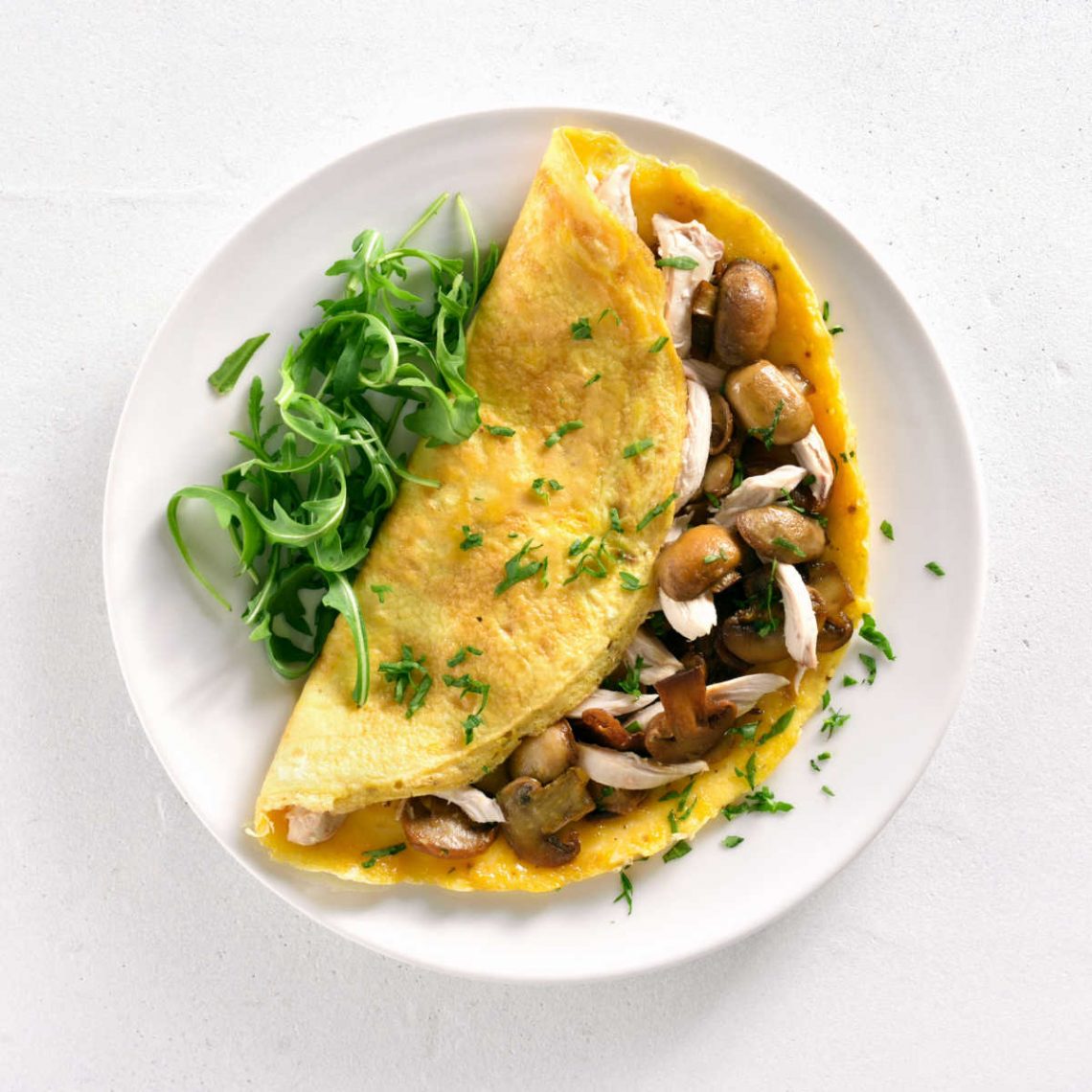
The Beautiful Simplicity of the Omelette
I’m one of those people who enjoys an egg dish as my main meal of the day. Turns out I’m not the only one. Humans have been dining on eggs since the dawn of time. We were probably eating them raw before we emerged from the trees. And clearly, we’ve been cooking them for at least a million years. Jungle fowl were domesticated in India around 3200 B.C.E. Since then, eggs have usually been conveniently at hand, and egg dishes can be found in virtually every cuisine.
When I was growing up, my mother had what I later learned she called her easy supper: scrambled eggs. She’d send me out to the barn to collect a dozen eggs, and she’d then cut up some hot dogs, whisk the eggs with a little milk, and cook it all up for a quick and easy dinner for the family. Not a list-topper for a meal, but after a day of working outside, it filled the bill – and the stomach. When I left home and moved east, I was forced to up my game when cooking. It was in the late 1960s, and Julia Child had set the bar higher for home cooks, especially in places like the Boston area. So I worked to perfect an omelette.
The classic French omelette is an easy preparation, but it requires the cook to pay attention to the eggs and the heat. Pouring the beaten and seasoned eggs into a hot pan filled with foaming butter, you need to stir the eggs with a fork until they start to thicken, then quickly pull back the sides and tip the pan to allow the uncooked egg to hit the hot pan sides. Of course, you can add any filling to the cooked omelette before you fold over the cooked egg mixture, then slide it out.
The kuku
While the French have been making omelettes since the early 1600s, if not earlier, it appears that they might have borrowed that approach from the ancient Persians, who are credited with originating many dishes. If you were to travel there today, you’d find the kuku. The Persian version is loaded with vegetables or herbs or even pistachios, which are first sautéed before adding a generous portion of beaten eggs. The mixture is placed in a preheated oven where it is baked until the eggs are well set before serving.
The kuku is similar to the Greek and Italian frittatas. Of course, the eggs are often fortified with vegetables depending on what’s freshly available, and the cheeses are local: taleggio or feta. When served, the omelettes are sometimes topped with yogurt. If you’ve been to Spain, you’ve likely come across the ubiquitous tortilla de patatas. It’s not a flat pancake; it’s the Spanish potato omelette. Potatoes are slowly cooked along with onion and garlic before adding them to a mix of whipped eggs and fried over high heat until done, making sure not to form a brown crust.
Egg foo young
On the other side of the world, the Chinese have been making egg foo young for a long time. Originating in the southern Chinese province of Guangdong, the name literally means Hibiscus egg. And like similar dishes elsewhere, it is often made with local vegetables: bean sprouts, bamboo shoots, chopped cabbage, and spring onions. When meat is added, it’s usually pork, shrimp, or chicken, and the omelette portion is often served with a sweet and sour sauce. Chinese chefs in America often cover the omelette with a sauce or gravy, but in St. Louis, Chinese chefs serve a St. Paul sandwich. This creation features an egg foo young patty served with mayonnaise, a dill pickle, and sometimes lettuce and tomato between two slices of white bread.
Tamago yaki
In Japan’s tamago yaki, the eggs are mixed with soy sauce, sugar, and dashi before being portioned in a hot frying pan. They are rolled up while additional portions are added to the pan and rolled until the eggs are used up. The completed omelette roll is formed into a square with a sushi matte, then sliced into pieces before serving.
In Thailand, the wok-cooked eggs are stuffed with a mix of ground pork, tomatoes, onions, fish sauce, and spices. Finally, In India, the masala omelette wrap is a common street food. The everyday meal is an oozing combination of hot spices, chutney, and cheddar cheese.
This certainly opens up the options for the next time I’m thinking of an omelette for dinner. What’s your favorite?
Do have ideas for topics you’d like me to cover? Or comments on this blog? Please click on “Read in Browser” or on the headline to view the blog on the website. You can log in and comment at the end of the blog to share your thoughts and start a discussion.
If you’d like to share the blog, click on the Facebook icon or one of the others. Thanks!





4 Comments
TRACY MAY
Enjoyed reading this, Farmboy. Wonder if we’ll discover some unique egg dishes while in Costa Rica!
Farmboy
Most likely for breakfast. Gallo Pinto is a flavorful but simple rice and bean dish traditionally served in Costa Rica alongside eggs, tortillas, and strong coffee at breakfast time. You might also hear about barbuto, but usually not in a restaurant. It’s more often a home-cooked egg dish. And don’t forget to put lizard sauce on your eggs.
Angela Carbone
Is it advisable to take the eggs out of the fridge to warm to room temperature before making the omelette?
Farmboy
It would probably be a good idea. Makes them a little more malleable.